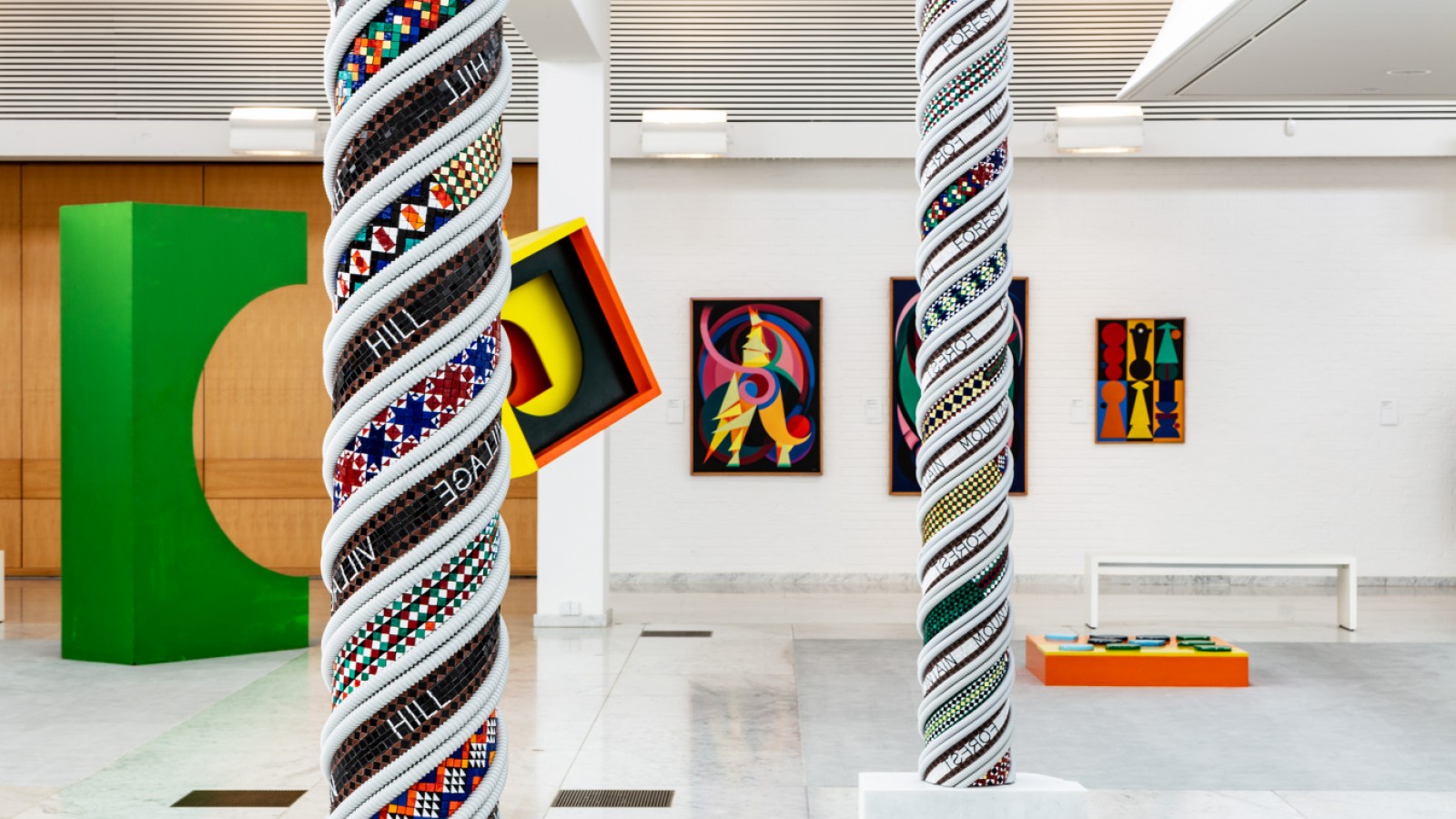
The Power of Colour
Without colour, no art. It may not be possible to express it quite as radically as this, but colour has always played an important role in the development of art. People have used colour since the dawn of time to either express themselves spiritually and symbolically or purely decoratively, and the development of colour constitutes a major scientific field in its own right.
This presentation from Kunsten’s collection shows works that all use colour as a bearing element. Many of the works have completely abandoned recognizable figures and communicate solely with colour. From Auguste Herbin’s colourful paintings dating from the 1930s to Poul Gernes’ vividly coloured works from the 1960s.
Placed in the center of the exhibition you see The Alphabet of Shapes, 1966 by Poul Gernes, which consists of simple, geometric shapes, each painted with a single colour. The works by Poul Gernes are decorative, straightforward and dynamic. Gernes’ wish was to communicate directly via colour and shape, thus making art easily accessible to everyone. Simple, universal shapes such as the circle and the square predominate, along with his use of bright colours.
Art inspires and communicates across time and place. This is why this presentation is neither about a particular time in history nor a specific place in the world. But about colour which affects us, evokes emotions and moods, and transforms the space around us.
We wish you a pleasant journey into the world of colour and its power.